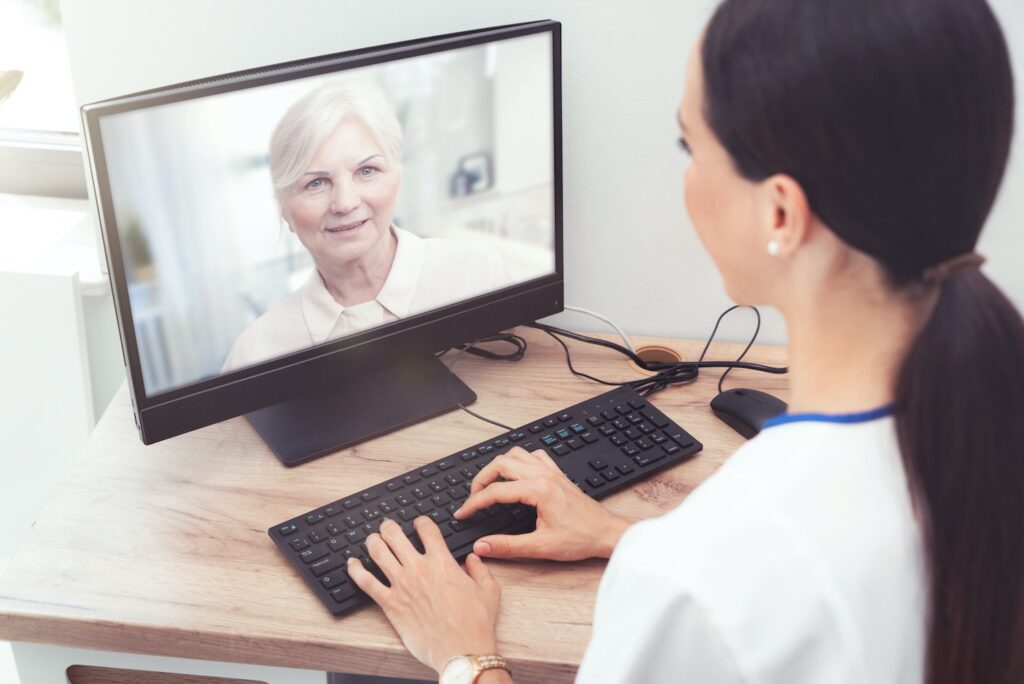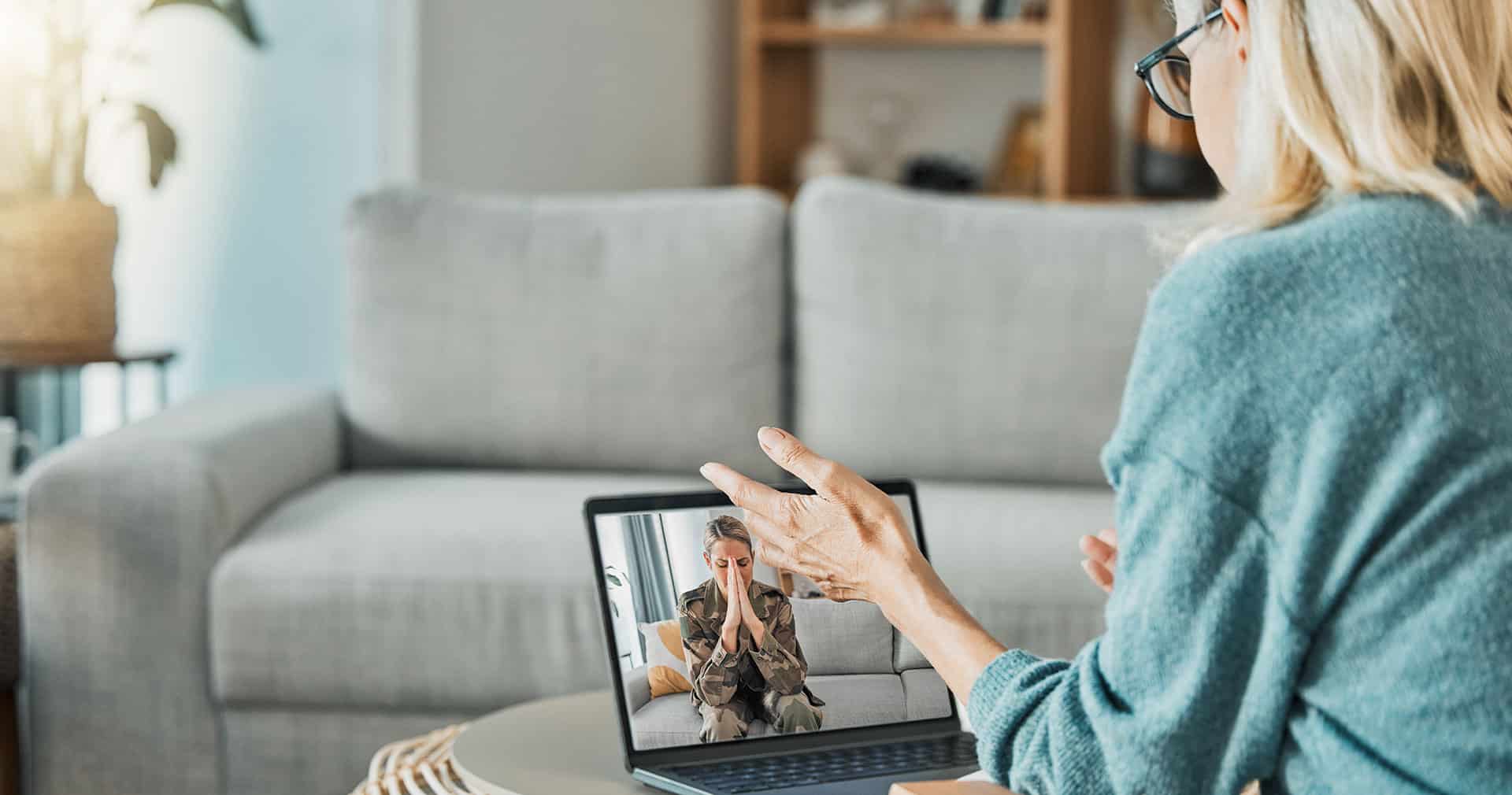Telehealth is revolutionizing how we access medical care. It enables patients to consult with their doctors remotely by computer or phone. According to a national survey, 22% of Americans already use it.
This innovation benefits older adults in particular. It simplifies the process of finding healthcare for those who find travel challenging.
Telehealth is more than a safe and convenient alternative to in-person visits. It’s an effective path to quality healthcare. Telehealth improves patient outcomes and can be cost-effective.
Moreover, telehealth expands access to medical services. Easier access makes healthcare more equitable. This is especially crucial in areas with limited local medical facilities.
The widespread ownership of smartphones also helps. Research shows that 89% of people in the U.S. and 78% globally own smartphones.
In this article, we explore the significance of telehealth for elderly patients. We examine its benefits and offer practical tips for implementation. Let’s get started.
Understanding the Unique Needs of Elderly Patients
Elderly patients need special care in telehealth. They often have health concerns. This makes timely appointments very important.
They might need help with daily tasks. Or they may need chronic disease support, for example. But, they may have limited access to transport. With this in mind, doctors need to choose the best model of care for each older patient.
Telehealth is one potential solution. However, many older people find technology intimidating. They may not know how to use computers or the internet well. This is called the digital divide.
It’s up to healthcare providers to make telehealth easy. How? By first understanding the needs and experiences of elderly patients.
Each individual is different. Doctors should take an unique approach to help each one. For some, telehealth works. Others feel better seeing the doctor in person.
One study by the National Center for Biotechnology Information showed that 64% of older adults found telehealth visits to be very easy. Only 9% found the technology difficult.
Healthcare providers should adapt to fit each patient’s preferences, and limitations. However, promoting telehealth options among existing patients can help relieve some concerns they may have.
Telehealth offers a convenient and cost-effective way to ensure services for older adults who may have substantial healthcare needs. It provides smoother access for those with mobility or transportation limitations as well.
On the clinical side, using telehealth will also help future-proof a practice.
RELATED ARTICLE: The Future of Telehealth: Predictions and Trends for the Next Decade
Strategies for Promoting Telehealth Adoption Among Elderly Patients
Telehealth for elderly patients is important. It helps them get medical care easily. There are ways to make more older adults use telehealth.
Let’s look at three effective strategies:
Create Educational Initiatives
Teaching older patients about virtual visits is key.
Explain how telemedicine visits work. Show them the benefits of using it. Healthcare providers might choose to offer a hands-on tutorial.
Education can happen in primary care clinics or community centers. It helps prepare all patients for remote healthcare access.
Host Informational Workshops
Telehealth workshops are for patients and their caregivers.
In these workshops, users learn about telehealth services. They discover how to book and attend video visits.
This information is important for older adults. It builds their confidence in using telehealth for general healthcare or Medicaid services.
Distribute User-Friendly Guides
Giving out easy-to-use guides is another good step.
Guides should be simple to read and use. Show how to start a telehealth visit. Review the process and what they can expect. Explain how to solve common problems.
This is really helpful for elderly people who are new to technology.
Caregiver Involvement
Caregivers play a crucial role in facilitating telehealth for elderly patients. It’s essential to equip them with the skills to navigate telehealth platforms.
Train them to set up and manage video and telephone visits. Caregivers can then ensure that the technology functions properly. They can assist older adults in engaging with primary care clinicians.
The impact of this empowerment is significant. It leads to more consistent and effective use of telehealth services. It also reduces the likelihood of missed appointments.
Caregivers can also relay vital information between the patient and the healthcare provider. This support is particularly beneficial in managing chronic conditions.
Establishing clear communication channels is also key to success. It ensures that information is given accurately and efficiently.
This is particularly important during video and telephone visits. Visual cues may be limited, so clear speech is critical.
For instance, a doctor might explain a new treatment plan during a video visit. The caregiver could take detailed notes. During telephone visits, caregivers can play an active role in asking clarifying questions.
Later, they can discuss them with the patient. This ensures that the patient understands and can follow the plan.
Effective communication with caregivers enhances the healthcare experience for elderly patients. It leads to better-informed decisions, higher patient satisfaction, and improved health outcomes.
Simplified Technology Platforms
Telehealth services must be easy for elderly patients to use. The design should be straightforward. Include large, clear buttons and easy-to-read text.
This approach is especially helpful for those new to digital technology.
Telehealth platforms should also be compatible with common devices like smartphones and tablets. Most people—including medicare beneficiaries—already own and know these devices.
Older patients can use their own devices, avoiding the need to invest in new technology. This integration is vital for consistent telehealth access. Simple telehealth services encourage older adults to use them.
Best Practices for Enhancing Patient Engagement
When patients know what to do, they feel more confident. This is good for everyone in the healthcare system. Here are three best practices to help you achieve this outcome:
Personalize the Onboarding Process
When older adults start using telehealth, the onboarding should be personal. This means assisting the patient step-by-step.
Personalized onboarding helps reduce the risk of mistakes. It lowers the barrier to entry, too. Elderly patients are already set up and ready to attend their first appointment.
Individualize Training Sessions
Training is a key component of telehealth for elderly patients. Each session should tailor-fit the patient’s needs.
Some might like a video visit. Others might prefer a phone call. The training should cover how to use these methods.
Set Realistic Expectations
Physicians and providers need to set clear expectations for patients. Communicate clearly exactly how telehealth fits into their overall healthcare plan.
Not all health issues are right for telehealth. Some need in-person visits. Patients should know what telehealth can and cannot do. This helps them trust the service.
RELATED ARTICLE: How to Engage Patients in Telehealth
Provide Regular Communication
Doctors should talk to elderly patients often. Physicians can schedule periodic check-ins to keep track of patients’ health. This type of consistent communication can help telehealth feel more personal.
To make communication easier, patients should have different options to talk to doctors. Patients can choose to have conversations by phone, video, or chat. Giving them the choice of their preferred method makes them less likely to opt out.
When patients feel more engaged in the process, they have a stronger overall relationship with their provider.
Overcome Technological Barriers
Some elderly patients may not have home computers or internet service. Doctors might help them by assigning a staff member to walk them through what they need for home setup. This dedicated staff member can also help by reviewing technology basics.
They may also enlist a caregiver, family member, or other outside source to help.
Incorporate Technology Literacy Programs
Another way to bridge the digital divide is through technology literacy programs. These classes are specifically designed for older adults. They teach them how to use phones and computers independently.
Then, when they go home, they feel confident logging on and attending appointments.
Doctors might work with groups that teach technology. They can tailor classes for elderly patients.
RELATED ARTICLE: How Healthcare Practices Are Saving Money with Technology
Embrace Cultural Sensitivity
Doctors should understand cultural differences. It makes patients feel comfortable, valued, and respected.
For example, telehealth services should be available in different languages. Healthcare clinics should also incorporate cultural competency into their telehealth training programs.
Pay Attention to Patient Feedback
It’s important to listen to what elderly patients think about telehealth. Doctors can set up ways to get feedback. This could be a simple survey after a telehealth visit.
Doctors and staff should use the feedback to make changes. If many patients have the same problem, it needs to be fixed. This helps make telehealth better for everyone.
The telehealth experience should continuously improve. Teams can keep asking for feedback and making changes accordingly. They can also ensure updates are secure and approved by an institutional review board.
3 Tips for Telehealth Enhancement
Ready to start using telemedicine in your practice? Here are some steps to get you started.
Start a Patient Outreach Program.
Start by assessing telehealth readiness. Create a simple outreach program for your elderly patients. Inform them about telehealth options. Use phone calls, emails, or brochures.
Explain the benefits. Show them how easy it can be. This helps them feel less intimidated. And it may entice them to use telehealth services. It’s a direct way to boost telehealth adoption.
Offer Regular Telehealth Workshops.
Host monthly workshops in your clinic or virtually. Teach patients and their caregivers how to use telehealth tools.
Make these workshops interactive and easy to understand. Cover topics like device setup, starting a telehealth visit, and what to expect during a session.
Establish a Tech Support Hotline.
Set up a dedicated hotline for telehealth tech support. This line can help patients and caregivers with any issues they face. It can be about setting up an account, troubleshooting, or general inquiries.
Improve Telehealth for Elderly Patients Today
The potential of telehealth is significant. It can give patients of all ages and abilities remote access to necessary medical care.
The benefits of telehealth outweigh the potential challenges. To increase accessibility and adoption you should always:
- Follow best practices
- Provide training
- Listen to patient feedback
It’s about making telehealth as helpful as in-person visits.
If you are ready to enhance your telehealth services, explore Updox Telehealth.
Updox lets doctors and patients meet through video and audio calls. It is safe, follows HIPAA rules, and is user-friendly. It integrates with most EHR systems, too.
Doctors can see many patients at once. They can also offer interpreter services. This helps all patients get the care they need.
Want to see how Updox Telehealth works? Schedule a demo with us. Learn how it can make your practice better for everyone. Let’s connect and improve healthcare together.





